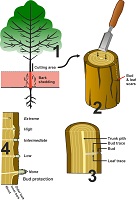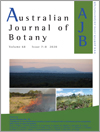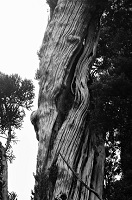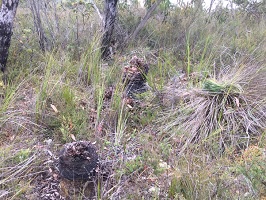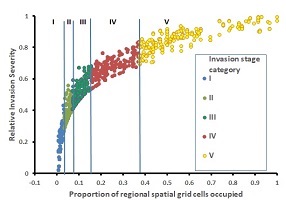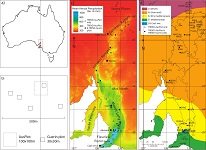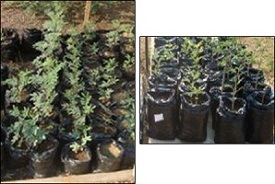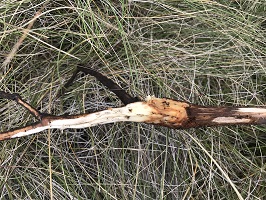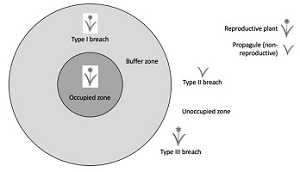Australian Journal of Botany
Volume 68
Numbers 7 & 8 2020
In savannas, grasslands and other disturbance-prone biomes, traits related to disturbance (e.g. herbivory, drought, and fire) play a central role in explaining species performance and distributions and are the focus of this new handbook. In this handbook, we provide an additional set of standardised protocols for sampling plant functional traits in grasses, forbs and woody plants. For each trait, we provide a brief description, list important environmental filters and their relevance, and provide detailed sampling methodologies.
In the wet forests of western Tasmania tree species grow on other trees as accidental epiphytes. The incidence of accidental epiphytes increased with basal area of the host. Some tree species favoured accidental epiphytes more than others, with old growth eucalypts being the prime host. Epiphyte taxa segregated between hosts. In both tall eucalypt forest and rainforest, accidental epiphytes are an important component of complexity.
Long-term (26-year) impacts of Phytophthora cinnamomi infestation were investigated in heathy woodland in the Great Otway National Park. There was significant disease progression, declines in plant species richness and susceptible species such as Xanthorrhoea australis (Austral grass-tree) a keystone species that contributes greatly to vegetation structure and fauna habitat.
We examined distribution and abundance of major weeds in Queensland, Australia, and constructed invasion curves at intermediate–lower spatial scales. Our work provides the first state-wide and regional-level invasion stage-categorisation, and spread patterns of weeds in Queensland. The findings serve as input into policy, management and research directions of Queensland’s prioritised weeds.
Detecting environmental thresholds at which vegetation changes rapidly is important for predicting climate change impacts. We test for environmental thresholds on a spatial gradient in South Australia using two survey methodologies, and find vegetation change is strongly related to climate but detect no obvious thresholds. This work demonstrates the susceptibility of Mediterranean climate ecosystems to climate change globally and improves our ability to forecast their future trajectories.
Plants live in constantly changing environments that are often unfavourable or stressful for growth and development. The drought causes water deficit in plants and affects water relations, membrane integrity, pigment content, and photosynthesis. Our hypothesis is that Vachellia farnesiana plants show tolerance to drought due to the mechanisms of protection of the photosynthetic apparatus, osmotic adjustment and reduction of oxidative damages.
Phytophthora gregata has been associated with the rapid decline of a subalpine wetland shrub Pimelea bracteata. We tested the susceptibility and route of infection of this and six other threatened wetland species and found four to be susceptible. From field symptoms, infection was expected to occur through plant collars; however, infection was also observed through roots.
When weeds invade an area, containment is often seen as the best fall-back option if eradication seems impossible. We examined extensive management and research literature and concluded that containment is currently poorly defined and no easier to achieve than eradication. We offer a clear definition and outline how the feasibility and success of containment strategies can be better assessed.
 , T. Charles-Dominique, G. P. Hempson, N. Stevens, M. te Beest, S. Archibald, W. J. Bond, K. Bunney, C. Coetsee, J. Donaldson, A. Fidelis, X. Gao, J. Gignoux, C. Lehmann, T. J. Massad, J. J. Midgley, M. Millan, D. Schwilk, F. Siebert, C. Solofondranohatra, A. C. Staver, Y. Zhou and L. M. Kruger
, T. Charles-Dominique, G. P. Hempson, N. Stevens, M. te Beest, S. Archibald, W. J. Bond, K. Bunney, C. Coetsee, J. Donaldson, A. Fidelis, X. Gao, J. Gignoux, C. Lehmann, T. J. Massad, J. J. Midgley, M. Millan, D. Schwilk, F. Siebert, C. Solofondranohatra, A. C. Staver, Y. Zhou and L. M. Kruger
